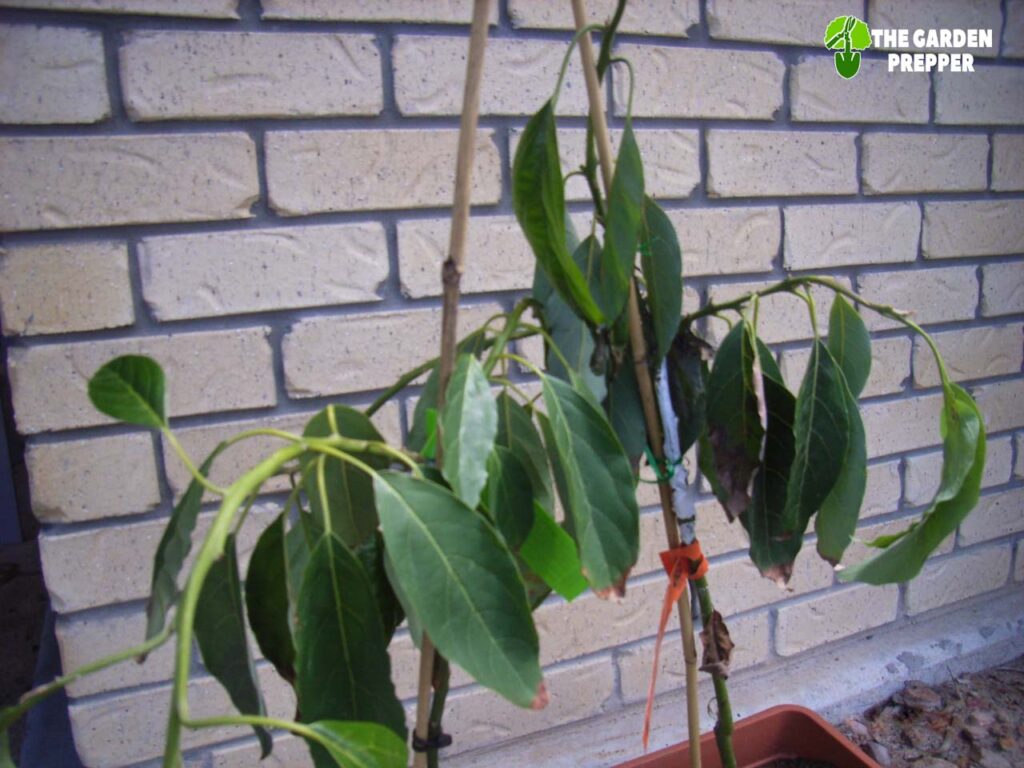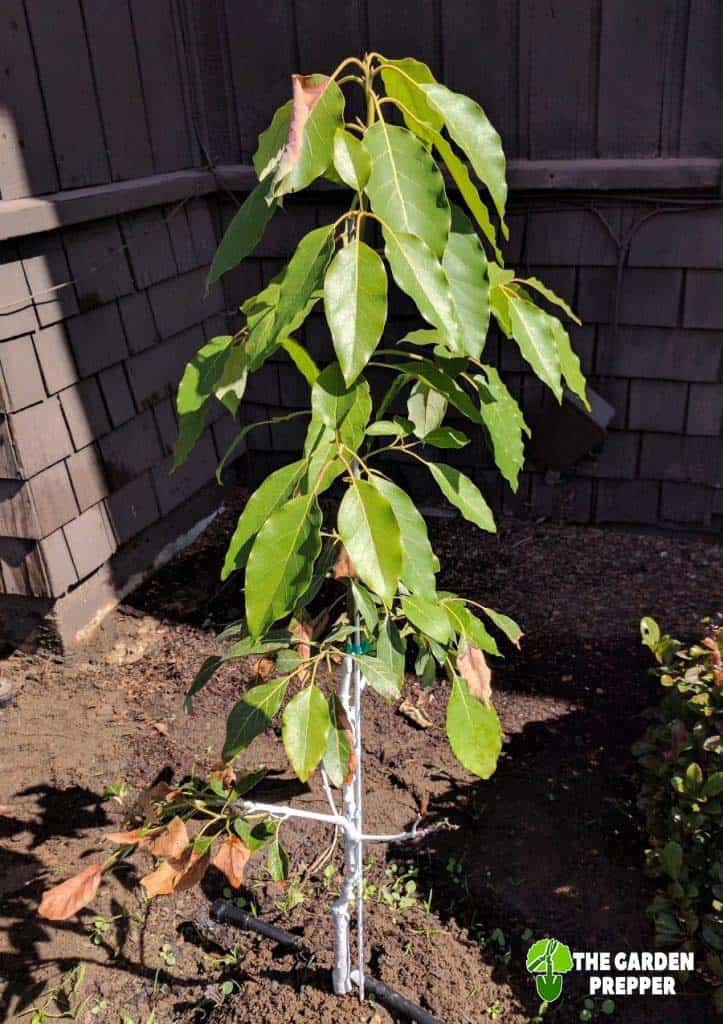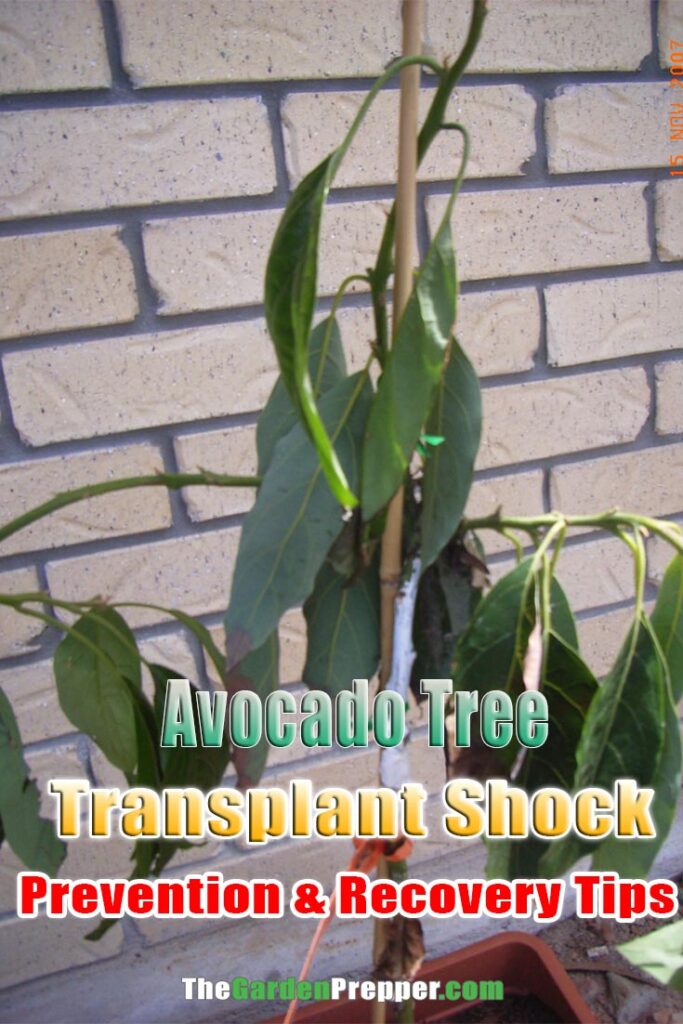Is avocado tree transplant shock preventable?
Just like any other plant, avocado trees are not exempted from transplant shock. Whenever the root system is disturbed during the transplanting process, this can significantly impact the plant.
This happens when you move the plant to an environment that it is not accustomed to. Thus, signs of it wilting may be observed.
How can you prevent transplant shock in avocado trees? And if shock has already occurred, what can you do to help your tree recover? Here’s everything you need to know to save your avocado tree and help it to thrive after a transplant shock.

How To Reduce Chances Of Avocado Tree Transplant Shock
It is inevitable for trees to undergo transplant shock. If you are moving your avocado tree from one area to another, you can do something to minimize the shock.
Here are things you can do that will reduce the impact of transplant shock to your avocado tree:
1. Keep the roots intact.
The primary cause of tree transplant shock is root damage. This occurs during the process of transplanting, especially if your avocado tree has a very thick and spread out root system.
It is, however, possible for plants to survive even after some of its root system has been lost. Yet, it is better to avoid this so as not to put more stress to your plant.
When you dig up your avocado tree, be sure to step back a bit from the trunk. If it is only a small tree, a distance of 1- 2 feet from the trunk is good and about 3 – 4 feet away for taller trees.
Be very careful when you dig to avoid causing damages to the bigger roots. Although it is not possible to save all of the tree’s roots, you can most certainly save most of them. Then, this will minimize transplant shock.
2. Leave excess soil on the roots.
A few people tend to shake off the soil stuck on the roots after digging. Then, to make things worse, they soak the roots in water.
This is the worst thing you can ever do to your avocado tree, which can do so much harm to it.
Your tree’s root system develops with the help of beneficial fungi. Moreover, the tree is able to absorb moisture, as well as key nutrients.
Thus, when you wash away the soil, you are actually removing these beneficial fungi. In the end, you are causing more harm than good to your tree.
3. Transplant your tree as soon as possible.
Once you have dug up the tree along with the soil, you need to start working towards replanting it right away.
Never leave your tree with the root system exposed. Whether you leave it outdoors or indoors, you should never do this to avoid further damages to your tree. This is particularly true if it is too hot outside.
Plant your tree the very same day. In case the tree is quite huge, you may have to see professional assistance with a transplanting service. They have proper equipment for transplanting the tree the best way possible.
4. Be very careful when you transplant the tree.
If you are transplanting your small avocado tree into a pot, you need to be very gentle with it. Putting into a pot is actually easier because this minimizes the risk of causing damage to the roots.
Just make it a point not to make the soil crumble and break the root ball.
Also, never bury the trunk. Plant it about an inch or half an inch above the surface of your yard. If you put soil right on the trunk, it will lead to rotting, causing the tree to die.
5. Put the tree in a shaded area.
Next up, make sure you choose the right location for your transplanted tree.
Aside from root damage, too much sun is another common cause of tree transplant shock. Consider the old location where the tree was thriving. It is best to select an area in your yard that has a similar condition to help the tree adapt well.
If there is minimal light in the place where it used to grow, then you should put some shade. Not only will this help the tree to get used to the new environment but it will also prevent moisture from evaporating too quickly. Thus, it can draw a good amount of water it needs from the ground to grow well.
A quick solution for a shade is by simply installing a garden umbrella over your tree. It is a fast and easy way to shade your tree but then again, it can prevent rainwater from being absorbed by the roots.
Another option is by setting up a few sticks to create a frame in the ground. Then, you can place a shading net on the top. This helps to filter a portion of the sun’s intense rays while allowing rainwater to get to your tree’s roots.
How Much Shade Does Your Tree Need?

Your avocado tree needs shade during the first two months after transplanting it. Once you have observed that it is doing better, you can get rid of the shade for a brief period. This is only ideal to do, however, when the weather is cooler without summer heat at all.
But if you have seen the tree is starting to wilt and the leaves begin to droop, then you should keep the shade on until winter. You can remove it once spring comes, which is guaranteed to help the plant revive.
For avocado trees replanted in a pot, select an area in your home that does not get direct sunlight. Only after a month can you place it in a sunnier area and check how your plant reacts. If you don’t see any drooping leaves, it should be fine to leave it there. Otherwise, keep it shaded for two months.
6. Water appropriately.
And most importantly, be sure to water your tree the right way.
Never give an excess of water as this defeats the purpose of helping it to live. In fact, if there is too much water stuck in damaged areas in the root, this will only case rotting.
You should water on the base and check if the soil is not parched. Watering once or even twice every week should suffice. Add a little more if severe drought is present.
The amount of water your plant needs depends on its size. It can be a gallon or 5 or even more. The bigger the tree, the more water it needs.
Keep the soil slightly moist but not soaked and swampy. With potted avocado trees, this should not be an issue you need to deal with since the drainage holes are there to let excess water out.
7. Take the fruits out.
When a tree is at its fruiting stage, this means that so much nutrients and energy are being used up and taken away from the tree. There are even some trees that only bear fruit once every couple of years, which gives the tree a time to rest.
So, if you are transplanting your avocado tree during the fruiting season, be sure to pick the fruits out. This will help your tree to survive and sustain minimal shock during the transplant.
In case there are no fruits yet, you should simply pick out the flowers. It also minimizes the energy expenditure on the tree and helps it to recover faster.
But there’s an exception to this step. If you are merely transplanting a small avocado tree into a pot, you can skip removing the fruits and flowers. It should be able to survive just fine.
Read more: Avocado Trees Turning Yellow? Here are the Reasons Why!
Additional Tips To Minimize Avocado Tree Transplant Shock
After transplanting your avocado tree, make sure you keep the leaves and branches intact. Some gardeners tend to remove these to minimize moisture evaporation. However, it does not work this way.
As plants develop branches and leaves at the start of the season, this can also help the tree to develop new and strong roots. Rooting is then improved for years to come.
Furthermore, pruning adds stress to the plant. So, why add another source of stress in addition to the transplant shock it is already going through?
And lastly, you can consider using rooting hormones to minimize the impact of transplant shock while helping the tree recover from it.
While it is not always necessary, it does prove to be beneficial to your plant. The auxins in these rooting hormones provide support to the roots, helping them to develop at a faster rate.
Once again, it is an optional tip that can support your tree. It is not entirely necessary but is a good solution for those who want to speed up the process of recovering from a transplant shock.
Wrapping Up
An avocado tree transplant shock is inevitable. But there are ways to minimize the shock, which we have shared with you in this guide.
So, be sure to follow these tips and help your tree to thrive in its new location. Then, you can enjoy more years of good quality fruit from your avocado tree!
